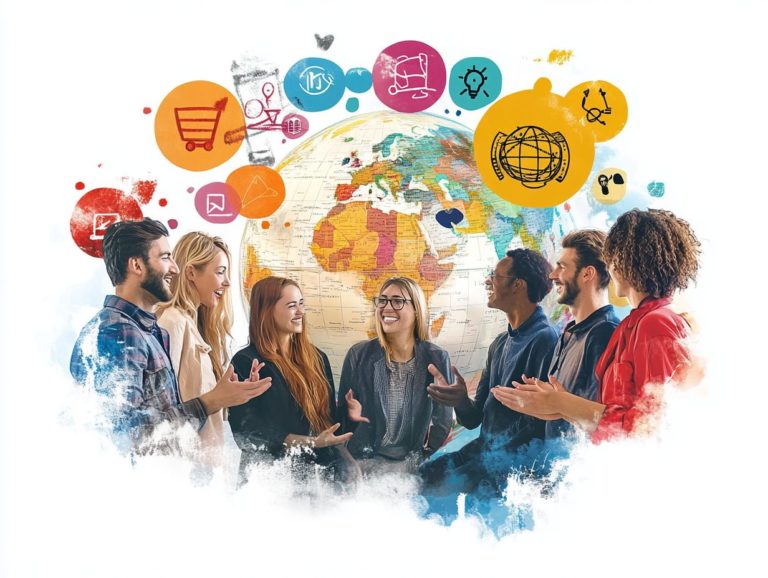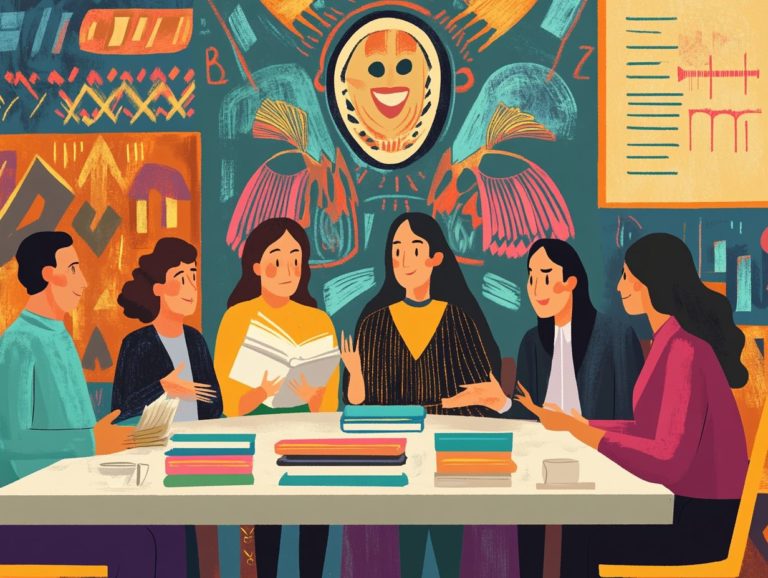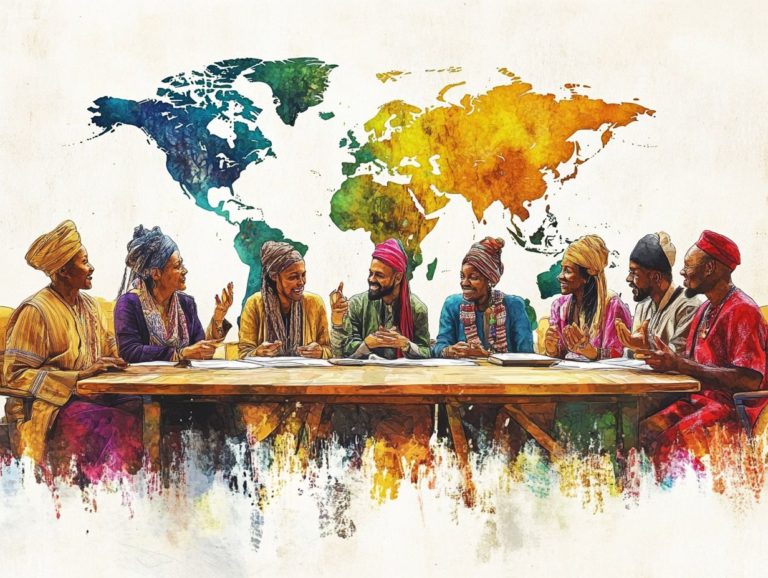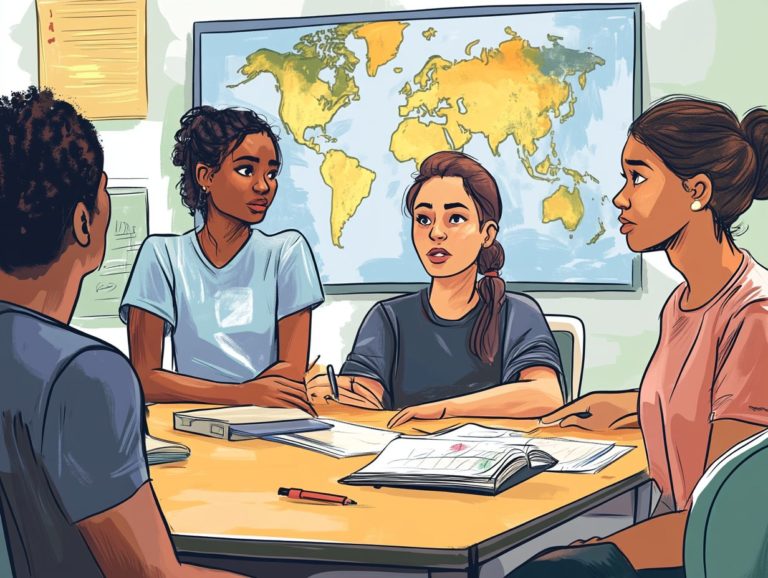understanding language barriers in cultural communication
Effective communication is the cornerstone of meaningful relationships. However, cultural differences can create significant barriers.
This article explores the complexities of cultural communication, highlighting various language barriers both verbal and nonverbal that can lead to misunderstandings.
It examines factors contributing to these barriers, from stereotypes to cultural nuances, and offers practical strategies for overcoming them.
By improving your understanding of different cultures, you can bridge gaps and build deeper connections across diverse communities.
Join us on this journey to enhance your cultural understanding!
Contents
- Key Takeaways:
- The Importance of Cultural Communication
- Types of Language Barriers
- Impact of Language Barriers on Communication
- Factors Contributing to Language Barriers
- Overcoming Language Barriers
- Improving Cultural Understanding
- Frequently Asked Questions
- What are language barriers in cultural communication?
- How can language barriers affect cultural communication?
- What are some common language barriers in cultural communication?
- How can understanding language barriers help improve cultural communication?
- What are some ways to overcome language barriers in cultural communication?
- How can organizations promote understanding of language barriers in cultural communication?
Key Takeaways:
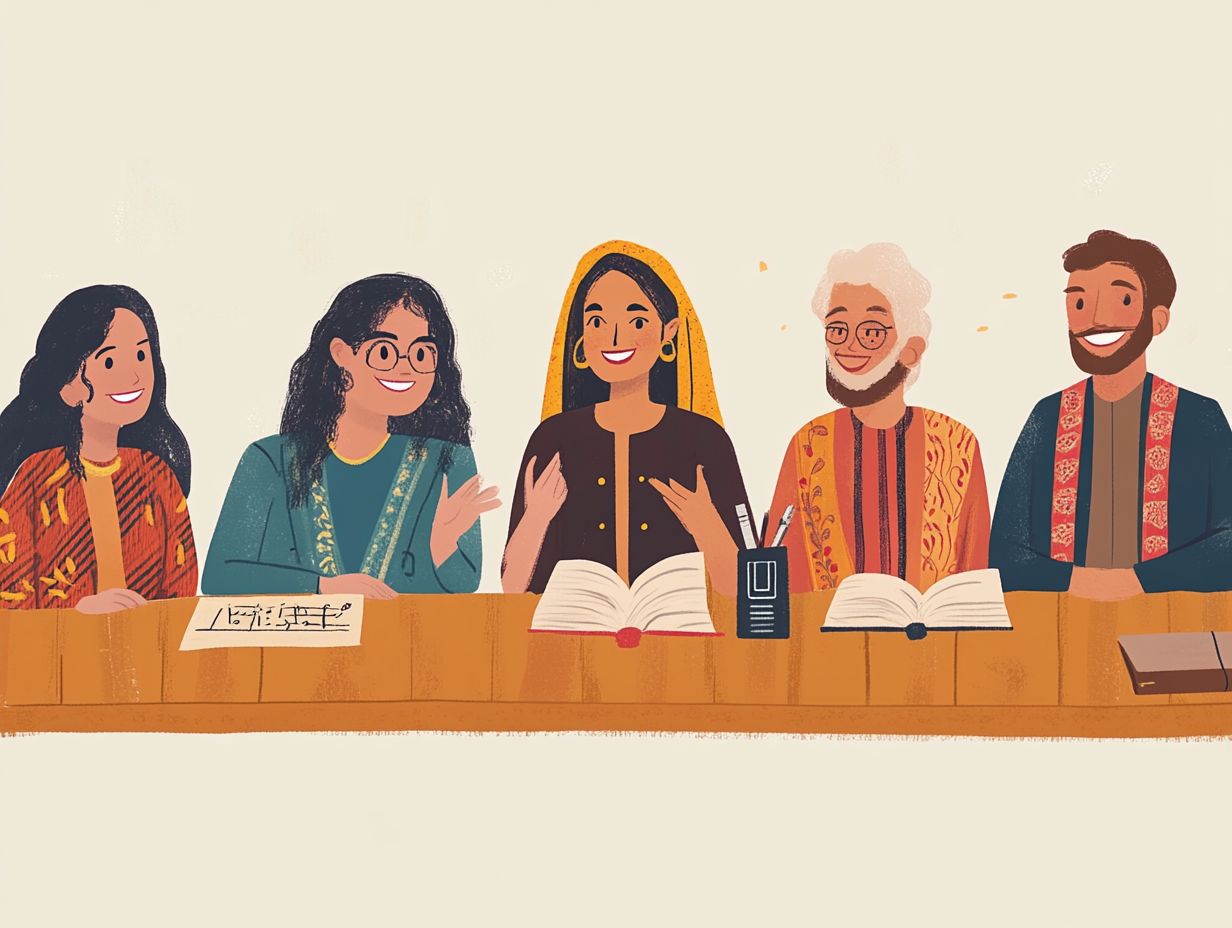
Cultural communication is essential for building understanding and respect between people from different backgrounds.
Verbal and nonverbal barriers can hinder effective communication, leading to misunderstandings and challenges.
Overcoming language barriers requires clear strategies and a willingness to understand and respect diverse cultures.
The Importance of Cultural Communication
Cultural communication is vital in today s diverse workforce. It acts as a bridge over the gaps created by language barriers and cultural differences.
When you foster effective communication and collaboration among employees from various backgrounds, you create a richer, more harmonious work environment.
By focusing on non-verbal cues, cultural norms, and written communication, your organization can cultivate clarity, reduce misunderstandings, and enhance team dynamics.
This awareness promotes a cohesive workplace and lays the foundation for effective training programs that boost cultural awareness and understanding.
Defining Cultural Communication
Cultural communication involves engaging with individuals from different cultural backgrounds, sharing information and emotions while considering their unique identities.
This process is crucial for fostering understanding in diverse environments, especially in our interconnected world.
Active listening is your ally; it helps you grasp not just spoken words but also the subtle cultural nuances that accompany them.
For example, in a business meeting with colleagues from the U.S. and Japan, you may notice different communication styles. One party may prefer directness, while the other emphasizes harmony and non-verbal cues.
Being clear in expressing your thoughts is vital to minimize misunderstandings caused by different cultural interpretations.
By recognizing and bridging these differences, you can foster more effective dialogues.
Types of Language Barriers
Language barriers manifest in various ways, typically falling into verbal and nonverbal obstacles.
Each type of barrier significantly contributes to communication challenges, especially in workplaces that embrace cultural diversity.
Verbal and Nonverbal Barriers
Verbal barriers may arise from differences in language proficiency, dialects, and accents. Nonverbal barriers stem from how non-verbal cues are interpreted, which can vary widely across cultures.
These challenges can create divides in communication, especially in diverse workplaces.
Consider an employee struggling with a second language; critical instructions may be misunderstood, leading to errors in execution.
Nonverbal barriers also come into play when someone misinterprets a colleague’s gestures or facial expressions. For example, a nod may be seen as agreement when it was merely acknowledgment.
Such misinterpretations can lead to frustration and conflict among team members, ultimately stifling collaboration and productivity.
Recognizing these barriers is crucial for creating an inclusive environment where effective communication can thrive.
Impact of Language Barriers on Communication
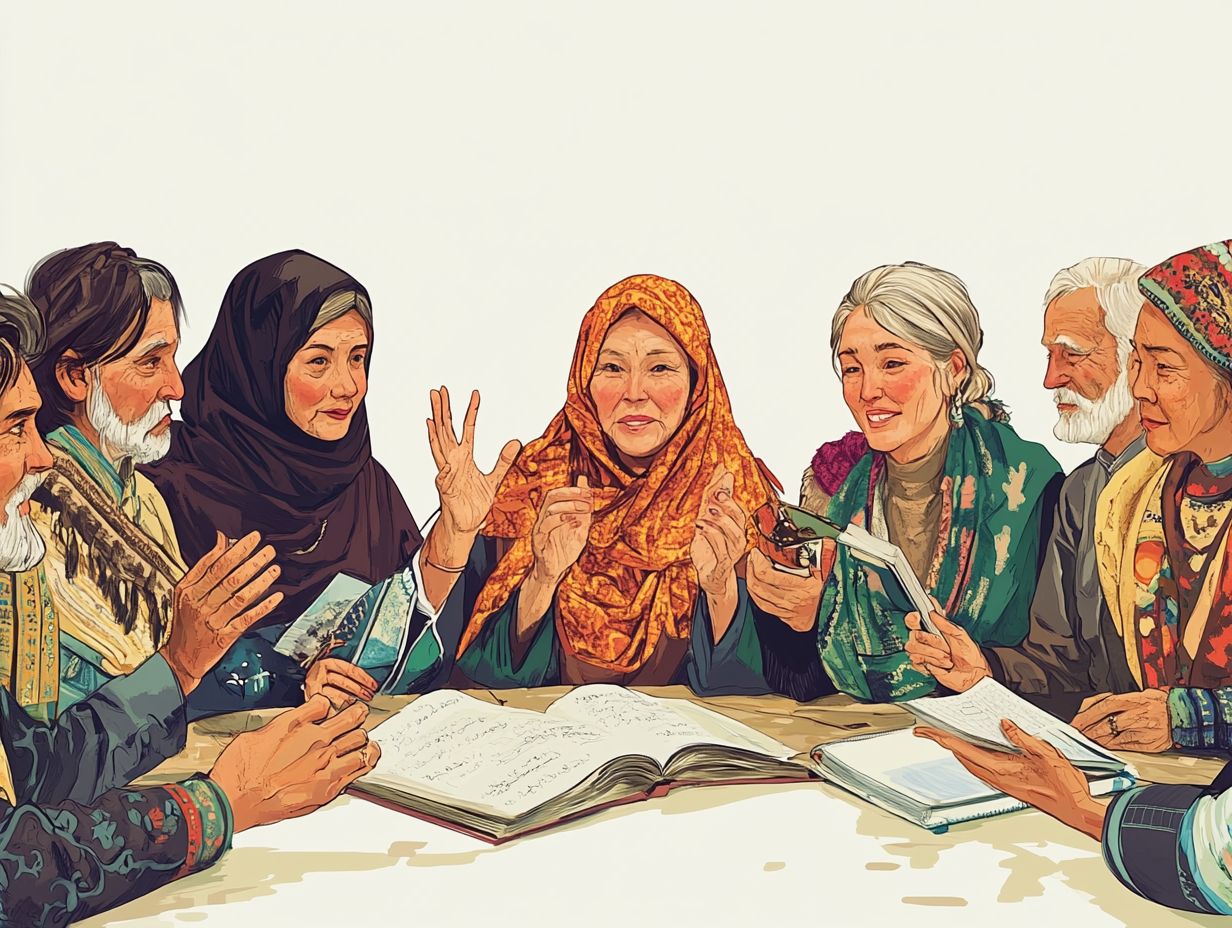
The impact of language barriers on communication can be profound. These barriers create misunderstandings and challenges that impede effective dialogue within a diverse workforce.
Such obstacles can strain interpersonal relationships and ultimately affect overall productivity.
Misunderstandings and Challenges
Misunderstandings stemming from language barriers often lead to significant communication challenges. Cultural differences can amplify these issues, creating confusion and frustration.
Consider this: when interacting with individuals from diverse cultural backgrounds, phrases and gestures that seem innocuous to you may hold entirely different meanings for someone else. For example, direct eye contact may signal confidence and engagement in some cultures, while in others, it could be seen as disrespectful or confrontational.
These subtle nuances can easily lead to misinterpretations, stifling effective dialogue.
Using tools like multilingual interpreters individuals who can translate different languages in real-time or providing language training can ease these tensions. This helps create a smoother and more inclusive communication experience.
By acknowledging these cultural subtleties and implementing supportive measures, organizations can bridge the divide that language barriers create.
Factors Contributing to Language Barriers
Several factors contribute to language barriers. Cultural differences, stereotypes, and differing cultural norms significantly shape how communication is perceived and interpreted.
Understanding these nuances is essential for effective interaction and fostering meaningful connections.
Cultural Differences and Stereotypes
Cultural differences and stereotypes can create significant communication barriers. They often lead to preconceived notions that affect interactions and hinder the ability to connect on a deeper level.
These barriers may manifest in various ways, such as misinterpretations of nonverbal cues or differing communication styles. This can impede collaboration and mutual understanding.
For instance, directness in communication is often celebrated in Western cultures. In contrast, many Eastern societies prioritize harmony and indirectness, potentially leading to friction.
Research shows that knowing these cultural distinctions improves your communication. You can adjust your approach to connect better with others.
Employing strategies like active listening and participating in cultural sensitivity training can foster an environment where everyone feels valued and understood.
These practices can bridge the gap created by cultural differences.
Overcoming Language Barriers
Breaking down language barriers can transform communication in your workplace!
Don t wait! Start using strategies today to improve your communication.
Strategies for Effective Communication

Implementing effective communication strategies can significantly enhance clarity and mitigate misunderstandings within a diverse workforce.
By incorporating visual aids like charts, graphs, and infographics, you can create a more engaging learning environment. These tools not only convey key messages but also cater to various learning styles, making information more accessible for everyone.
Regular training sessions equip you and your colleagues with the skills needed to express yourselves clearly and understand one another better. This ensures everyone is on the same page.
Such initiatives effectively tackle common barriers like language differences and cultural misunderstandings, fostering a more inclusive atmosphere where all voices are heard and valued.
Improving Cultural Understanding
Enhancing your understanding of different cultures is crucial for a harmonious workplace.
By increasing cultural awareness, you improve communication among employees from diverse backgrounds. This strengthens relationships and fosters collaboration, leading to a more inclusive and productive environment.
Understanding and Respecting Different Cultures
Understanding and respecting different cultures are key to effective communication. This helps you appreciate cultural identities and interact sensitively.
In today s global workplace, these elements create a cooperative environment where everyone can thrive. Organizations should implement strategies like cross-cultural training sessions to help employees learn about their colleagues backgrounds and values.
Encouraging open dialogues enhances mutual respect. It provides a safe space for team members to express concerns or differences.
Incorporating diverse perspectives in problem-solving leads to well-rounded decisions and enriches workplace culture. Embracing cultural diversity creates a vibrant and productive work atmosphere.
Frequently Asked Questions
What are language barriers in cultural communication?
Language barriers are challenges that arise when people from different cultures try to communicate due to their different native languages.
How can language barriers affect cultural communication?
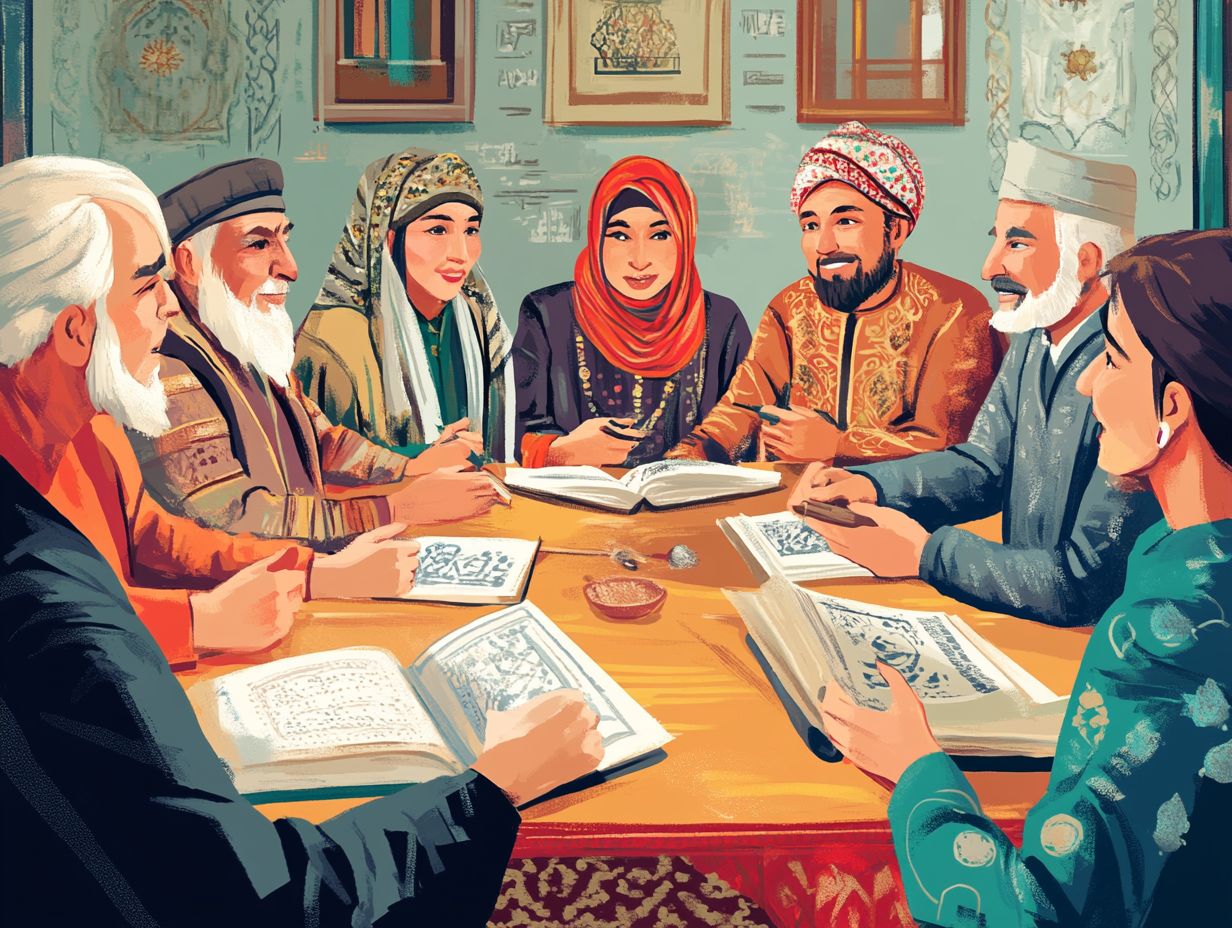
Language barriers can hinder understanding, making it crucial for us to explore understanding the linguistic diversity of cultures to reduce misunderstandings and conflicts between individuals from different backgrounds.
What are some common language barriers in cultural communication?
Common barriers include differences in vocabulary, grammar, pronunciation, and non-verbal cues like body language and tone of voice.
How can understanding language barriers help improve cultural communication?
Understanding these barriers allows individuals to develop skills to communicate effectively with others from different cultures. This fosters better mutual respect and positive relationships.
What are some ways to overcome language barriers in cultural communication?
Overcoming language barriers involves using visual aids, speaking slowly, using simple language, and seeking clarification. Being patient and open-minded is also essential.
How can organizations promote understanding of language barriers in cultural communication?
Organizations can promote understanding by providing language and cultural training, creating an inclusive environment, and using translation services when needed. It s vital to have clear guidelines for addressing language barriers in workplace communication.

